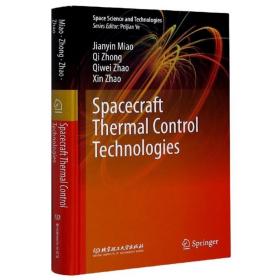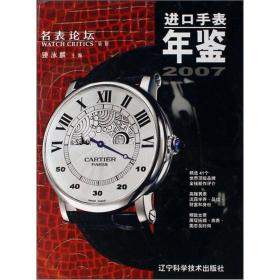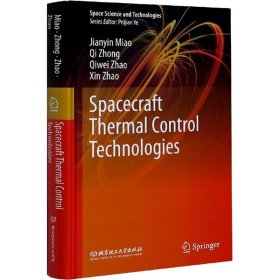
航天器热控制技术(英文版)
¥ 102.67 7.8折 ¥ 132 九五品
仅1件
河北廊坊
认证卖家担保交易快速发货售后保障
作者Jianyin、Miao、Qi、Zhong、Qiwei 著
出版社北京理工大学出版社
出版时间2020-09
版次1
装帧精装
上书时间2024-10-13
- 在售商品 暂无
- 平均发货时间 12小时
- 好评率 暂无
- 最新上架
商品详情
- 品相描述:九五品
图书标准信息
- 作者 Jianyin、Miao、Qi、Zhong、Qiwei 著
- 出版社 北京理工大学出版社
- 出版时间 2020-09
- 版次 1
- ISBN 9787568290104
- 定价 132.00元
- 装帧 精装
- 开本 16开
- 纸张 胶版纸
- 页数 360页
- 字数 445千字
- 【内容简介】
- 《航天器热控制技术(英文版)》是北京理工大学出版社与Springer Nature联合出版图书。航天器热控制作为一门综合多学科技术,涉及材料学、热学、数学、化学、光学、计算流体力学、电子学、计算机科学以及试验测量技术等诸多学科领域,是任何航天器必不可少的技术保障系统之一。《航天器热控制技术(英文版)》系统梳理、凝练了航天器热控制技术总体设计和分系统设计两个方面的特色,由中国空间技术研究院第一线专家领衔编著,全面展示了以苗建印研究员为主的团队在近年来所取得的创新成果。《航天器热控制技术(英文版)》强调航天器热控制技术系统性工程应用经验及热控制的自身发展、应用,凝练和总结了热控制技术的相关知识和系统设计要素。《航天器热控制技术(英文版)》主要供从事航天器热控制研究、设计的工程技术人员及从事国防工业的决策人员参考。
- 【目录】
-
1 Introduction
1.1 Mission of Spacecraft Thermal Control
1.2 Demand for Thermal Control
1.2.1 Temperature Level
1.2.2 Temperature Uniformity and Stability
1.2.3 Wind Speed and Humidity
1.3 Thermal Characteristics
1.3.1 Heat Source
1.3.2 Magnitude and Fluctuation of Heat Dissipation
1.3.3 Heat Flux
1.3.4 Thermal Capacity
1.4 Main Constraints
1.5 Main Technology of Thermal Control
1.6 Main Tasks
References
2 Space Environment
2.1 Overview
2.2 Environment at Launching Phase
2.3 Earth Orbital Space Environment
2.3.1 Earth Orbital Thermal Environment
2.3.2 Other Earth Orbit Space Environment
2.4 Moon and Planetary Space Environment
2.4.1 Lunar Environment
2.4.2 Mercury Environment
2.4.3 Venus Environment
2.4.4 Mars Environment
2.5 Thermal Environment at Re-entry or Entry Phase
2.6 Inductive Environment
2.6.1 Inductive Environment Caused by Engine Operation
2.6.2 Inductive Environment for Spinning Spacecraft or Equipment
References
3 Design of Spacecraft Thermal Control Subsystem
3.1 Overview
3.2 Mission Characteristics
3.2.1 Ground Phase
3.2.2 Launch and Ascent Phase
3.2.3 Orbiting Phase
3.2.4 Reentry or Entry Phase
3.2.5 Landing Phase
3.3 Basic Principles of Thermal Control Design
3.4 Design Method of Thermal Control System
3.4.1 Thermal Control Design Requirements and Conditions
3.4.2 Selection of Thermal Design Cases
3.4.3 Selection of System Design Methods
3.4.4 Selection of Thermal Control Technologies
3.5 Thermal Control Design Stages and Key Points
3.5.1 Concept Phase
3.5.2 Initial Prototype Phase
3.5.3 Formal Prototype Phase
3.5.4 Operation Improvement Phase
References
4 Typical Thermal Control Technologies for Spacecraft
4.1 Overview
4.2 Heat Transfer Technology
4.2.1 Introduction
4.2.2 Thermal Conductive Materials
4.2.3 Heat Pipe
4.2.4 Thermal Interface Fillers
4.2.5 Thermal Control Coating
4.2.6 Fluid Loop
4.2.7 Convection Ventilation Device
4.2.8 Radiator
4.2.9 Consumable Heat Dissipating Device
4.2.10 Phase Change Material (PCM) Device
4.2.11 Thermal Switch
4.3 Thermal Insulation Technology
4.3.1 Introduction
4.3.2 Radiation Insulation
4.3.3 Thermal Insulation of Heat Conductance
4.3.4 Thermal Insulation Under Gaseous Environment
4.4 Heating Technology
4.4.1 Introduction
4.4.2 Electrical Heating
4.4.3 Radioisotope Heating Technology
4.5 Temperature Measurement and Control Technology
4.5.1 Introduction
4.5.2 Thermometry Technology
4.5.3 Temperature Control Technology
References
5 Typical Thermal Control Design Cases of Spacecraft
5.1 Overview
5.2 Design Cases of Spacecraft Thermal Control System
5.2.1 Thermal Control System Design of Remote Sensing Satellite
5.2.2 Thermal Control Design of Communication Satellite
5.2.3 Thermal Control System Design of Lunar Probe
5.2.4 Thermal Control System Design of Manned Spacecraft
5.3 Thermal Design Cases of Spacecraft Assembly
5.3.1 Thermal Design of Propulsion System
5.3.2 Thermal Design of Battery
5.3.3 Thermal Design of Electrical Equipment
5.3.4 Thermal Design of Camera
5.3.5 Thermal Design of Antenna
5.3.6 Thermal Design of Drive Mechanism
6 Thermal Analysis Technology
6.1 Overview
6.2 Space Energy Conservation Equation
6.2.1 Thermal Network Equation
6.2.2 Computational Domain and Boundary Conditions
6.2.3 Discretization
6.2.4 Thermal Model Construction and Solution Process
6.3 External Heat Flux Analysis
6.3.1 Sun Position
6.3.2 Orbital Parameters
6.3.3 Thermal Environment Parameters
6.3.4 Staying on Celestial Body
6.4 Radiation Computing
6.4.1 View Factor
6.4.2 Radiative Absorption Factor
6.4.3 Radiative Heat
6.4.4 Non-diffusive Radiation
6.4.5 Spatial Decomposition Method for Radiation Calculation
6.4.6 Residual Processing
6.5 Simulation of Specific Problems
6.5.1 Flow and Heat Transfer in Pressurized Cabin
6.5.2 Flow and Heat Transfer in Ducts
6.5.3 Heat Transfer of Heat Pipe
6.5.4 Low Pressure Gas Heat Conduction
6.5.5 Thermal Behavior of Solid-Liquid Phase Change
6.5.6 Thermal Behavior of Semiconductor Cooling
6.5.7 Junction-Case Heat Transfer of Electronic Components
6.6 Equivalent Transformation of Radiation Term of Thermal Network
6.6.1 Equivalent Heating
6.6.2 Equivalent Heat Sink
6.7 Thermal Model Correlation
6.7.1 Basic Knowledge of Thermal Model Correlation
6.7.2 Parameter Analysis
6.7.3 Correlation Method
References
7 Spacecraft Thermal Testing
7.1 Overview
7.2 Simulation Methods for Space Thermal Environment
7.2.1 Vacuum
7.2.2 Cold and Dark Background
7.2.3 Orbital Heat Flux
7.3 Environmental Heat Flux Simulator and Heat Flux Measurement
7.3.1 Environmental Heat Flux Simulator
7.3.2 Environmental Heat Flux Measurement
7.4 Thermal Balance Test
7.4.1 Thermal Test Model
7.4.2 Determination of Test Cases
7.4.3 Test Process and Method
7.5 Atmospheric Thermal Test
7.6 Low-Pressure Test
7.6.1 Overview
7.6.2 Selection of Test Gas
7.6.3 Gas Temperature Simulation
7.6.4 Flow Field Simulation
7.6.5 Measurement
点击展开
点击收起
相关推荐
— 没有更多了 —















以下为对购买帮助不大的评价